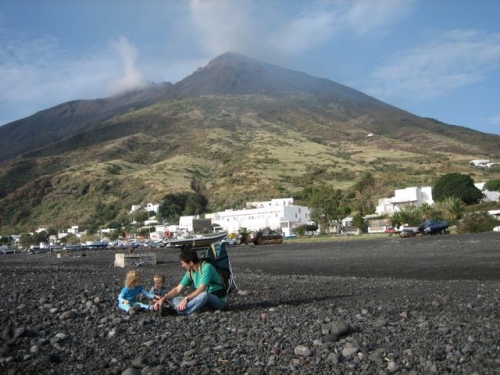Myth: Volcanoes are dormant for a very long time, suddenly erupt, and then become dormant again.
Fact: There are a wide variety of eruption lengths. Stromboli volcano off the coast of Italy has been erupting more or less continuously for over 2000 years! Other volcanoes have eruptions that last less than a day. According to the Smithsonian Institute's Global Volcanism Program, the median length of time for a single eruption is seven weeks.

There are two timescales of interest where erupting volcanoes are concerned:
- How long does a volcano stay active and what controls this? and
- How long does a single eruption last and what controls this?
The main factor controlling volcanic activity in an area is the timescale over which melt is produced. For example, in a subduction zone setting, volcanism goes on for as long as the subduction zone is active. Remember, from a couple of pages ago, the overall timescale for the lifetime of a caldera. Subduction is a process that generally lasts for millions of years. It shuts off when an entire plate has disappeared, or something causes the plate to change its direction so that it is no longer subducting. For an ocean island volcano, the timescale for activity is the lifetime of the mantle plume or other source of melt.
For a single eruption, the controlling factor is the volume of melt present in the magma chamber and the degree to which the magma chamber is over-pressurized. An eruption will usually last until the local melt has been depleted, or until the gas pressure inside the magma chamber falls to a level at which gas is no longer trying to escape. Certainly this is a fairly simplified overview. The internal plumbing of a volcano can be quite complicated, though recent monitoring efforts involving GPS, local seismometers, and tiltmeters are getting better and better at capturing the size, depth, and activity of magma chambers under active volcanoes.